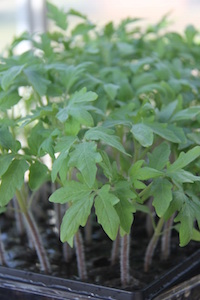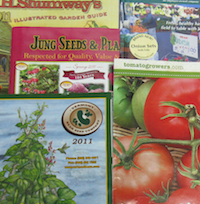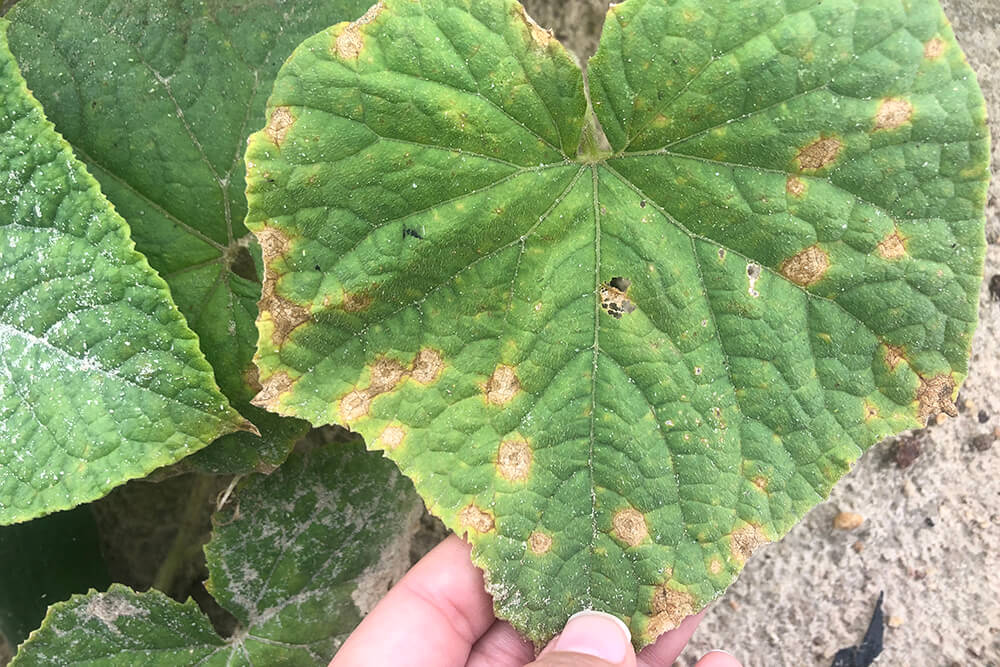Does winter weather have you anxious for spring? Are you ready to start digging in the dirt and growing tomatoes, peppers, squash and other warm season veggies?
Even though we still have chilly days ahead, seasoned gardeners can plan now for their spring vegetable gardens. On a quest to learn how, I sought the counsel of an expert, University of Georgia Lifetime Master Gardener Extension Volunteer Rachel Dutton. She shared with me her wisdom for surefire seed success.
Shop from catalogs
Dutton says start by reading winter seed catalogs and ordering several different varieties. “Try some familiar varieties, but also include some you can’t get at a local nursery. Experimenting with new and new-to-you vegetables is one of the advantages of starting plants from seed,” she said.
The veteran gardener prefers to start seeds in peat pellets on planting trays with clear lids. Peat pellets are those small round discs that expand when watered. You can buy them at most big box stores or garden centers. Read the seed package to determine how deeply to plant the seeds in the pellets for optimal germination.
Dutton starts her seeds from mid-February to mid-March. This gives her seedlings six to eight weeks to grow before outdoor temperatures are safe for planting them in the vegetable garden. Warm soil, not just warm air temperature, is crucial for summer vegetable plant roots to begin growing. It may take longer for soil temperatures to warm up to between 60 and 65 degrees Fahrenheit, which is the optimal planting temperature.
Provide water, light and warmth
To start seeds indoors before the temperatures warm outside, Dutton depends on a lamp system in her basement. This provides light in the spectrum that plants need for optimal germination and growth. “I use one cool fluorescent lamp paired with one warm incandescent. I find that this combination of light provides enough warmth and light to get the seedlings to germinate within a few days,” she said.
To provide moisture, she adds water to the bottom of the pellet-filled trays. “The water will be soaked up from the base and this will prevent early problems with root rot and disease. Seeds and seedlings need to be moist, but not wet,” Dutton said.
Seeds will germinate and produce their first cotyledons (new seed leaves) under the tray covers. Once the first true leaves appear, Dutton removes the tray covers.
Take them outside a little each day
Soon after the lid is removed, transplant the seedlings to 3- or 4-inch diameter pots. Larger pots give seedlings room for root expansion. When the plants have three or four true leaves on the stem, Dutton knows they are ready to move them outdoors during the day.
“The immature seedlings need to harden off gradually outside. They won’t withstand cold temperatures or even intense sunlight at this point, so monitor the weather closely during this time,” she said. “Be sure to bring them in at night to protect them from temperature extremes.”
Once spring temperatures are consistently above freezing, the new plants can be moved into the garden.
Dutton says patience is the key to growing vegetables from seeds. “Starting vegetables from seed requires that you trust in benign neglect,” said Dutton, who has gained this insight through practicing the art and science of starting seeds for nearly 25 years. “Don’t give the seedlings too much attention. I can’t think of anything more satisfying than knowing I was able to produce a productive vegetable garden from just some tiny seed.”
For more information on planting a spring garden, visit the UGA Extension publications website at www.caes.uga.edu/publications.








